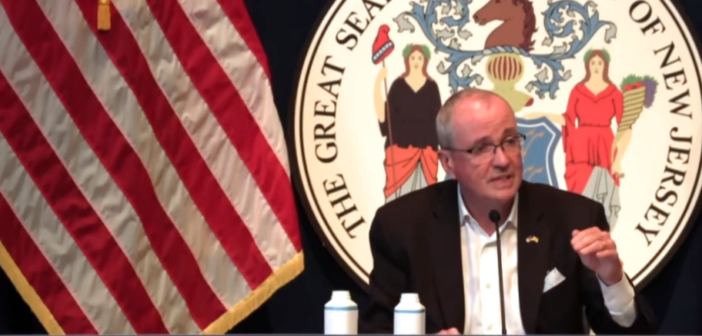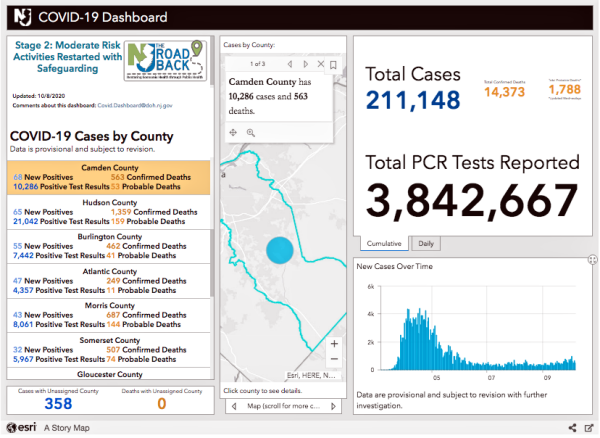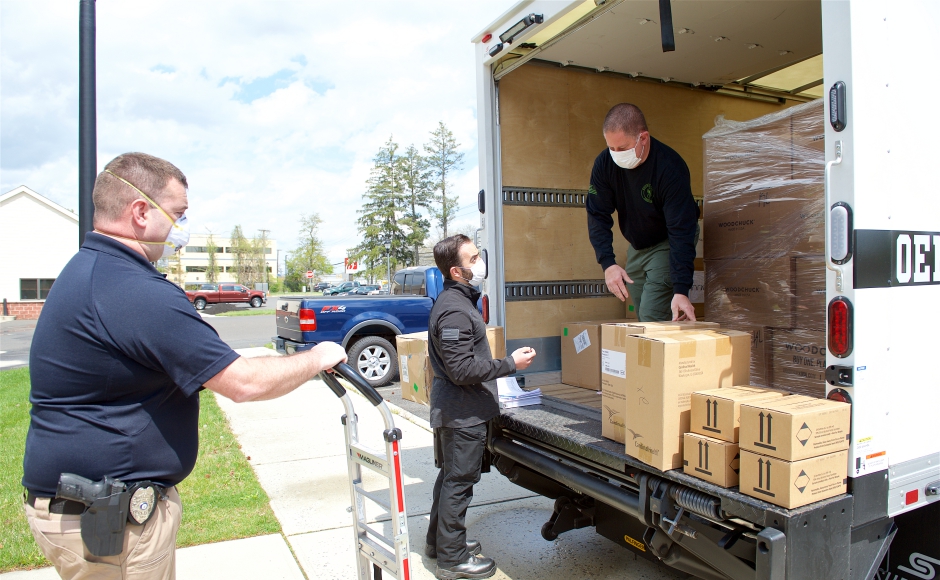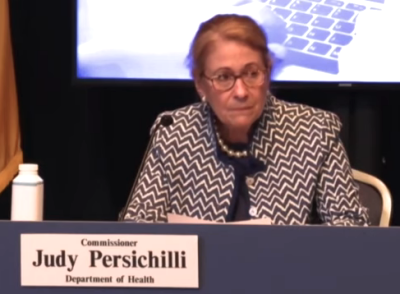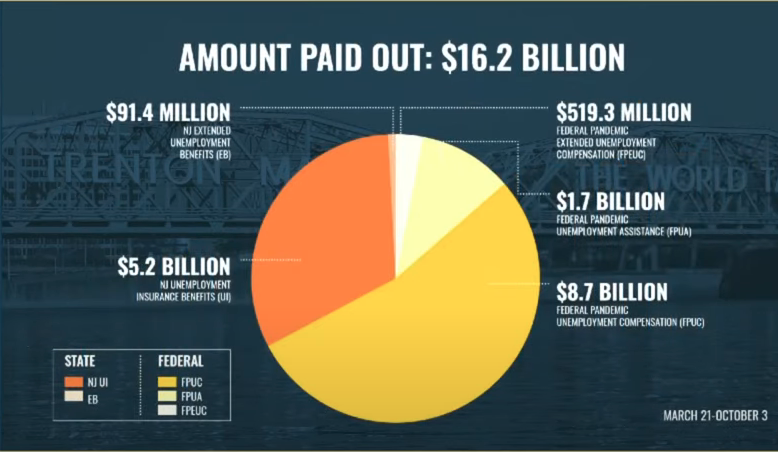If cases continue to spike as they have in recent weeks, New Jersey hospitals could face staffing concerns with no out-of-state relief in sight, said Health Commissioner Judy Persichilli.
By Matt Skoufalos | October 8, 2020
Another 1,301 New Jersey residents have tested positive for novel coronavirus (COVID-19), bringing the statewide total to 211,148 cases, Governor Phil Murphy reported Thursday.
It’s the largest single-day total seen in the state since May 29, when New Jersey logged 1,394 new positive cases.
Of the new cases, 22 percent are from Ocean County (285), and 10 percent are from Monmouth County (128).
Bergen (97), Essex (96), Passaic (89), Union (85), and Middlesex Counties (84) also are all reporting more than 80 new cases each (right behind them was Camden County, with 68).
Sadly, 11 more residents have perished from complications related to the virus, bringing the statewide death toll to 14,373 lives lost during the pandemic. Seven of those occurred within the past week.
In addition to those lab-confirmed fatalities, the state has acknowledged another 1,788 probable COVID-19-related deaths, one more than previously reported levels.
Since March, 270 of every 100,000 New Jersey residents have been hospitalized with COVID-19, and 163 of every 100,000 have died from COVID-19-related complications.
More than 3.8 million people have been tested for the virus statewide, with a 2.40-percent positivity rate per 100,000 residents.
Rate of transmission (Rt) at 1.22, spot positivity higher in South Jersey
The statewide average of COVID-19 spot positivity testing stood at 3.69 percent October 4; in South Jersey, it was higher, at 4.08 percent.
Rt, the variable that describes the seven-day, rolling-average rate of transmission of new COVID-19 cases, hit 1.22 from samples taken October 6.
An Rt figure greater than 1.0 means that each new COVID-19 patient is infecting more than one other person, on average, and the spread of the virus is increasing.
Since its mid-April COVID-19 spike, the highest reported RT in New Jersey was 1.48, recorded August 1. The lowest was 0.62, recorded June 9.
Long-term care accounts for half of all deaths, a fifth of those infected
Throughout New Jersey, 652 people currently are hospitalized with a case of COVID-19—the highest number since August 6, Murphy said.
Of those, 422 have tested positive for COVID-19, and 230 are awaiting confirmation of their symptoms.
Among those hospitalized patients, 148 are in intensive or critical care, and 52 of the ICU and critical-care patients (35 percent) are on ventilators.
Across the state, 741 long-term care (LTC) centers have reported at least one case of COVID-19, and 149 are dealing with an active outbreak. LTCs account for 38,950 infected patients and staff in New Jersey, or 20 percent of total cases.
That includes 25,227 residents and 13,723 staffers who’ve been infected, as well as 7,172 lab-confirmed resident and staff deaths (50 percent of the statewide total), with facilities self-reporting 121 staff deaths.
Of 656 veterans residing in a state-run home, 390 residents have tested positive for COVID-19, and 146 have died from complications related to the virus. Three veterans presently are hospitalized with COVID-19, and 244 have recovered from the virus.
At state-run psychiatric facilities, 222 of 1,173 patients and 527 staff members have tested positive for COVID-19. Thirteen patients and seven staffers have died from complications related to the virus.
To date, 58 New Jersey children aged 1 to 18 have been diagnosed with pediatric multi-system inflammatory syndrome, New Jersey Health Commissioner Judy Persichilli said.
All those pediatric patients have tested positive for an active COVID-19 infection or the presence of COVID-19 antibodies, indicating exposure to the virus. No deaths have been associated with this syndrome in New Jersey, although several children have been hospitalized during their treatment.
Persichilli: ‘We are anticipating a second wave’
Amid an uptick in the number of residents hospitalized by COVID-19 and a general increase in cases, Persichilli said health officials are “anticipating a second wave” of new cases of the virus—a wave, she said, that “has the potential to become a surge.”
Although the state is stockpiling personal protective equipment (PPE) and the antiviral drug remdesivir, “staffing is a concern,” Perschilli said.
“Unlike in March and April, when healthcare workers from other states came to New Jersey to help out, those workers are now fully engaged in fighting this virus in their own states,” she said.
What’s behind the latest increase? Some may be attributable to gatherings associated with religious services or celebrations, Persichilli said; others could be traced to an uptick among college-aged students in Monmouth and Middlesex Counties.
But the health commissioner also said that new cases are likely associated with informal gatherings and socializing; therefore, New Jersey must expand its testing of asymptomatic persons as well.
“We know that the virus did not take a break,” Persichilli said. “It is presenting itself in younger individuals who are experiencing mild and moderate symptoms. We also know that asymptomatic spread is more prevalent than we thought.”
“There’s no denying there’s some kind of community spread here,” Murphy added.
In the absence of a vaccine or proven viral therapeutics, residents are advised to continue social distancing, hand-washing, and wearing face coverings as often as possible.
Persichilli also encouraged residents to participate in the statewide contact tracing effort by downloading the COVID Alert NJ app. To date, three percent of the state is using it, but “we need more to reach a wider public participation,” she said.
Unemployment update
Another 23,600 New Jersey residents have filed for unemployment in the past week, Murphy said.
That’s down by 3,500 people from week-ago levels, but adds to a total in excess of 1.65 million New Jerseyans who’ve sought unemployment benefits since March.
This year, New Jersey has paid out some $16.2 billion in benefits; 96 percent of those eligible have been paid for an average length of 16 weeks.
Although there’s no immediate plan to support those who’ve exhausted their benefits beyond the upcoming FEMA lost wages assistance, that benefit could provide as much as $300 a week for qualified residents, up to $1,800 payable in a lump sum.
Murphy called it “a workaround” from a federal government that has declined to provide “a bridge over troubled water” in terms of additional funding for those whose earning potential has been affected by the pandemic.
Read our ongoing round-up of COVID-19 coverage here.
Please support NJ Pen with a subscription. Get e-mails, follow us on Facebook, Twitter, and Instagram, or try our Direct Dispatch text alerts.

